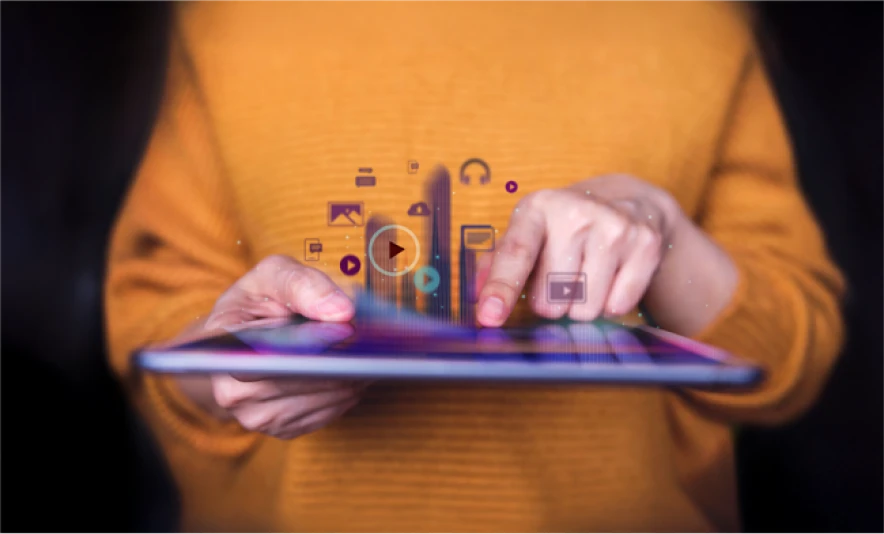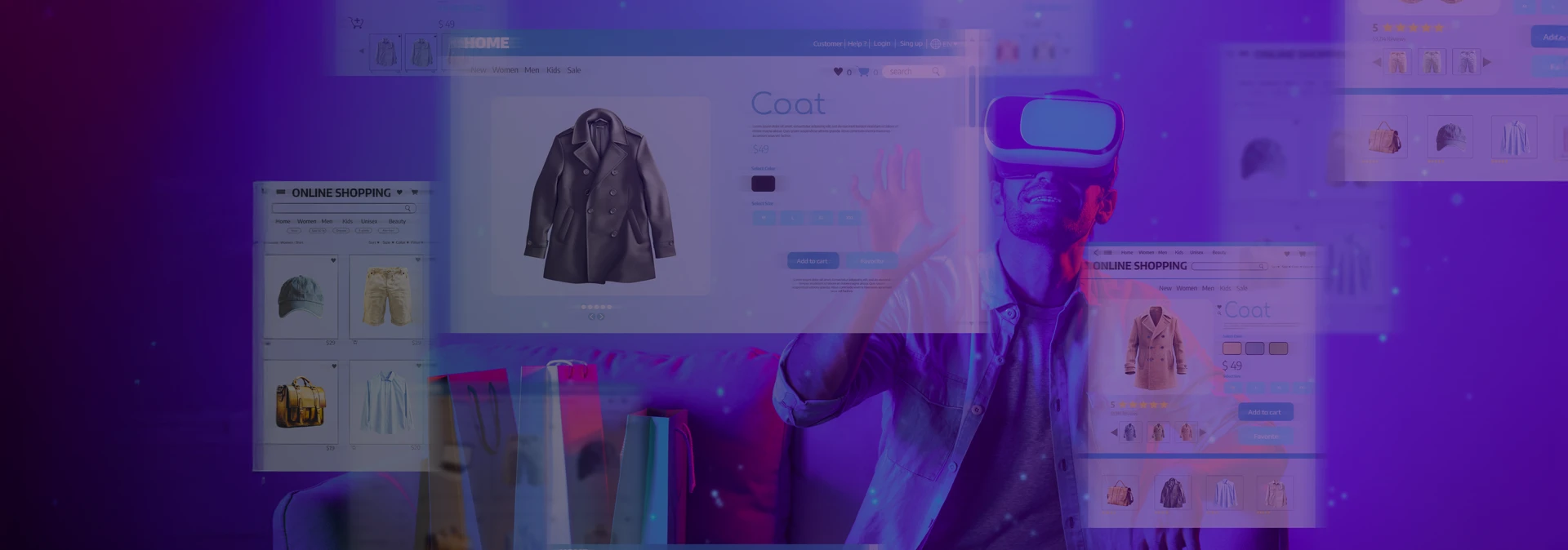Content marketing in 2025 is not just about blogs and social posts but about creating immersive, personalized experiences that turn casual scrollers into loyal fans. As AI changes the game of creativity and attention spans decline at an ever-increasing rate, and the brands that will survive will have to evolve or face the darkness of irrelevance.

Case Study: Spotify’s “Wrapped”
Spotify’s “Wrapped” campaign is much more than a recap: it’s a shareable, data-driven narrative that users look forward to year after year. By 2025, campaigns will get even smarter, leveraging AI to predict what audiences crave before they know it themselves.
Robots Can Write, But Humans Still Rule the Heart.
The digital landscape is being reshaped by AI tools like ChatGPT-5 and Jasper 2.0, ushering in a new era of content creation. These cutting-edge AI models are becoming invaluable assets for marketers and creatives alike. However, it's important to remember that the secret sauce isn’t about replacing the human touch—it's about enhancing and augmenting creativity.
Strategy:
- Idea Generation: Use AI to brainstorm fresh, out-of-the-box ideas. Imagine having a brainstorming partner who's always available and never runs out of coffee!
- Draft Outlines: Let AI handle the skeletal work. With AI, you can swiftly draft outlines and frameworks, saving time and mental energy for the finer details.
- Repurpose Content: Got a mountain of existing content? AI can help you breathe new life into it by repurpose it into various formats and styles.
Adding the Human Touch:
While AI is fantastic at churning out content, it’s the human element that infuses personality and emotion. Here’s where you come in:
- Humor: Sprinkle in jokes or quirky commentary to keep your audience engaged.
- Anecdotes: Share personal stories or experiences to create a deeper connection with your readers.
- Behind-the-Scenes: Give a sneak peek into the creative process. This transparency can make your content more relatable and engaging.
Case Study: Netflix
Netflix leverages AI to generate localized trailers tailored for diverse global audiences. But the magic doesn’t stop there. Human editors meticulously review these AI-generated trailers to ensure they resonate emotionally with the target audience. The result? A 30% increase in viewer engagement. This perfect blend of AI efficiency and human emotional intelligence creates content that truly captivates.

Hyper-Personalization: Because “Hey You” Isn’t Enough
Your Audience Isn’t a Crowd—They’re 8 billion Individuals.
In 2025, the era of generic content is over. Today’s consumers expect and demand hyper-personalized experiences that cater to their unique preferences, behaviors, and identities. Dynamic personalization isn't just a trend, it's a necessity for engaging and retaining your audience.
Logical and Analytical Approach to Hyper-Personalization:
- Leverage Data Analytics: Data is the backbone of hyper-personalization. By analyzing vast amounts of data, you can gain insights into consumer behavior, preferences, location, and even mood. This enables you to create highly targeted and relevant content that resonates with individual audience segments.
- Behavioral Segmentation: Analyze how users interact with your content, products, or services to tailor recommendations and messages that align with their interests and actions.
- Location-Based Personalization:Utilize geolocation data to provide contextually relevant content based on a user's physical location. This can enhance the user experience by making content timelier and more applicable.
- Mood-Based Targeting:Advanced sentiment analysis can gauge a user's mood based on their interactions, allowing for mood-specific content that resonates emotionally.
- Automated Personalization Tools: Tools like Dynamic Yield can automate the personalization process by generating personalized emails, product recommendations, and landing pages. These tools use algorithms to analyze user data and deliver tailored content in real-time.
- Personalized Emails: Automated tools can create personalized email campaigns that address the recipient by name and include content tailored to their preferences and past behaviors.
- Product Recommendations: Dynamic recommendation engines can suggest products based on a user's browsing history, purchase behavior, and preferences, increasing the likelihood of conversion.
- Custom Landing Pages: Create dynamic landing pages that adjust content and offers based on user data, ensuring a seamless and relevant experience from the moment they arrive.
- Consumer Behavior Insights: Hyper-personalization is grounded in understanding and responding to consumer behavior. By analyzing data, you can identify patterns and preferences that inform your content strategy.
- Audience Insights:Understand what drives engagement and conversion for different segments of your audience. Use this data to refine your content and marketing efforts.
- Performance Metrics: Track the effectiveness of personalized content through metrics like click-through rates, engagement, and conversion rates. This feedback loop helps continuously improve your personalization strategies.
Example: Coca-Cola’s “Share a Coke” Campaign
Coca-Cola’s “Share a Coke” campaign is a classic example of hyper-personalization. By personalizing labels with names, slang, and inside jokes, Coca-Cola created a highly engaging and memorable campaign. Looking ahead to 2025, imagine taking this a step further with augmented reality (AR)-enabled bottles that share personalized videos when scanned. This innovative approach not only personalizes the product but also creates an immersive and interactive experience for the consumer.

Interactive Content: Gamify or Get Ghosted
Passive Scrolling? That’s So 2023.
In the ever-evolving digital landscape, captivating your audience requires more than just passive content consumption. Today's consumers want to be active participants, engaging with content that not only entertains but also involves them on a personal level. Enter interactive content, where quizzes, polls, shoppable videos, and choose-your-own-adventure stories take center stage.
Surgical Analysis of Interactive Content:
Consumer Behavior and Touchpoints:
Understanding consumer behavior is pivotal to creating effective interactive content. Today's users crave experiences that are tailored to their interests and preferences, leading to higher engagement and satisfaction.
- Behavioral Insights:Analyze how users interact with your content. Use this data to identify patterns and preferences, allowing you to tailor interactive elements that resonate with different audience segments.
- TouchpointsIdentify key touchpoints in the customer journey where interactive content can enhance engagement. This could be during the discovery phase, product consideration, or post-purchase.
Creativity with a Purpose:
Creativity is the heart of interactive content. However, it's crucial to strike a balance between creativity and relevance to ensure the content aligns with user expectations and doesn't invade their privacy.
- Engaging Formats:Use innovative formats like quizzes, polls, and shoppable videos to create immersive experiences. These formats not only entertain but also provide valuable insights into user preferences.
- Personalized Interactions: Allow users to make choices and interact with content in ways that reflect their individual interests. Personalized interactions create a deeper connection and make the experience more memorable.
Logical Thinking and Privacy Considerations:
While creating interactive content, it's important to be mindful of user privacy and avoid overstepping boundaries.
- Data Usage: Be transparent about how user data is collected and used. Ensure that data is only used to enhance the user experience and not for intrusive purposes.
- Opt-In Mechanisms: Implement clear opt-in mechanisms for interactive elements that require user data. This empowers users to control their engagement and builds trust.
- Feedback Loop: Provide users with feedback on their interactions. This not only enhances the experience but also reinforces the value of their engagement.
Stat
Interactive content has been shown to generate twice as many conversions as static posts (HubSpot, 2024).

Ethical Storytelling: Trust Is the New Currency
Greenwashing? Cancelled. Authenticity? Viral.
In the digital age, where information is at everyone's fingertips, consumers—especially Gen Z and millennials—demand transparency and authenticity from brands. Ethical storytelling is no longer optional; it's a necessity for building trust and loyalty. Brands must share their flaws, failures, and fixes, not just their wins, to create genuine connections with their audience.
Analytical and Logical Approach to Ethical Storytelling:
Understanding Consumer Demands:
Gen Z and millennials are known for their skepticism towards traditional advertising and their preference for brands that are honest and transparent. They value authenticity and are quick to call out greenwashing or deceptive practices.
- Trust and Loyalty: Building trust through transparency leads to increased loyalty. Consumers are more likely to support brands that align with their values and demonstrate ethical practices.
- Credibility:Sharing not only successes but also challenges and how they were overcome enhances a brand's credibility. This approach humanizes the brand and makes it more relatable.
Creative Strategies for Authentic Storytelling:
Ethical storytelling requires creativity to convey messages effectively without coming across as insincere or preachy.
- Show, Don’t Just Tell: Use real-life examples, case studies, and testimonials to illustrate your brand's commitment to ethical practices. Authentic stories resonate more with audiences.
- o Visual and Interactive Content: Incorporate videos, infographics, and interactive elements to make your storytelling more engaging. Visual content can convey complex messages more effectively and leave a lasting impression.
Logical Integration and Privacy Considerations:
While being transparent, it's important to balance the information shared to avoid overwhelming or invading the privacy of your audience.
- Selective Sharing: Share relevant information that adds value to your audience. Avoid oversharing details that may not be pertinent to the message.
- Respect Privacy: Ensure that any data shared, such as customer testimonials or case studies, has the consent of the individuals involved. Respecting privacy reinforces trust.
Example: Patagonia’s “Don’t Buy This Jacket” Campaign
Patagonia’s “Don’t Buy This Jacket” campaign is a stellar example of ethical storytelling. By urging consumers to prioritize sustainability over consumerism, Patagonia not only promoted its values but also built a cult-like loyalty among its customers.
Conclusion
In 2025, content marketing is evolving at lightning speed. Brands that thrive are those that seamlessly blend cutting-edge technology with irreplaceable human creativity. AI-powered storytelling and hyper-personalized experiences are leading the charge, but the human touch remains the ultimate differentiator.
The future favors brands that innovate while staying grounded in authenticity. Audiences crave connection and want their values reflected in the brands they support. AI is a collaborator, not a replacement. It helps streamline workflows and scale creativity, but empathy, humor, and ethical judgment are still key.
Content marketing in 2025 is about creating meaningful moments. It's about crafting hyper-personalized, interactive, and ethically grounded experiences. Ready to lead the revolution? Let's shape the future together.









